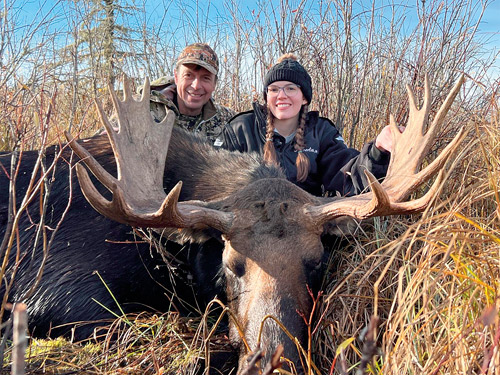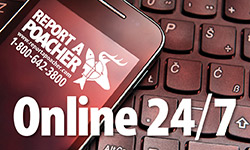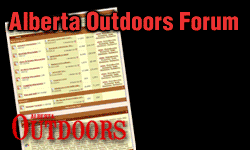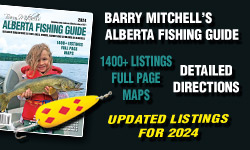Management Messages
Message from the Honourable Todd Loewen

Hunting remains an important part of life in Alberta, preserving family traditions, connecting us to the land, providing sustainable food sources, strengthening the economy and supporting wildlife management and conservation goals. Albertans are lucky to live in a world-class hunting destination where incredible adventures can be had in every corner of the province. Whether you’re an experienced hunter pursuing a once-in-a-lifetime ram, a family looking for whitetail deer for the freezer or a newcomer harvesting your first upland game bird, our diverse landscapes and abundant wildlife offer unique hunting opportunities for all experience levels.
As we head into the 2025-26 hunting season, hunters should carefully review this year’s guide due to a number of regulatory updates. Earlier this year, Alberta’s government was proud to introduce amendments to both the Wildlife Act and the Wildlife Regulation, modernizing our approach to wildlife management. These changes recognize Alberta’s ongoing commitment to conservation and the effective stewardship of the province’s wildlife populations, ensuring hunting is safe and sustainable for generations to come. We work hard to ensure hunting rules and regulations reflect current scientific knowledge and align with best practices across Canada. Key improvements include streamlining enforcement, reducing administrative burdens, improving clarity for hunters and introducing new hunting opportunities.
When properly managed, hunting in Alberta plays an important role in balancing ecosystem health and raising funds for conservation. Just this year, the Minister’s Special Licence Program raised over $900,000 for conservation initiatives via auction and raffle of licences for species such as bighorn sheep, pronghorn, elk, moose, cougar, wild turkey, whitetail deer and mule deer. These funds support initiatives throughout the province focused on habitat restoration, wildlife research and public education.
As Minister of Forestry and Parks, and as an avid hunter, I’m proud of the responsible stewardship shown by Alberta’s hunting community. Everyone on the landscape plays a role in maintaining the health of our wildlife populations and preserving the outdoors for future generations.
Please take time to review the 2025 regulations carefully, particularly the changes introduced this season. And remember, mandatory harvest surveys for Special Licences are essential for effective wildlife monitoring and future planning.
Sincerely,
Todd Loewen
Minister of Forestry and Parks
Important Changes and Information for 2025
GENERAL
- Alberta residency eligibility – The definition of an Alberta resident has changed. See Terms and Definitions below.
- All tracking devices attached to animals that are legally killed or found dead must be reported to the service and returned to the service.
- Definition of a ‘vehicle’ – non-motorized mobility aids, such as non-powered wheelchairs, are now exempt from the being classified as a vehicle and users of these devices will not be required to have a Weapons Discharge Permit to shoot from these devices while hunting.
BIG GAME
- Special licence harvest report deadlines – with additional elk seasons now extended to February 28, those elk special licences that end after February 15 must have their harvest reports submitted by March 15. All other special licence mandatory harvest reports must still be submitted by February 15.
- The minimum age for youth to hunt big game is now 10 years old. This means that a 10-year-old can hold a big game licence and can apply for big game draws.
- The minimum edible portions of big game that must be recovered by hunters, if fit for consumption, are: the four quarters, the loins and the neck.
- Resident use of outfitter allocations – a resident may continue to access outfitter allocated big game licences. This is now a permanent entitlement.
- Anyone who kills a male sheep over one year of age must now submit their report and deliver the complete unaltered skull with horns and eye intact within 14 days after the close of the season, or 30 days after the date that the animal was killed, whichever occurs first.
- Trophy sheep are now called ‘Class 1 Sheep’ and trophy antelope are now called ‘Class 1 Antelope’. Non-trophy sheep are now called ‘Class 2 Sheep’ and non-trophy antelope are now called ‘Class 2 Antelope’.
- The skins of black bears and cougars may now be abandoned and wasted ONLY IF the edible portions of the meat of those animals are recovered. A hunter may thus abandon the skin OR meat of a cougar or black bear. If skins are abandoned, the meat must be tagged like other big game animals, such as deer, elk or moose.
ELK
- Antlerless elk seasons have been extended to February 28 in several WMUs. See Big Game Seasons on page 47 for details.
- An additional season of December 21 to February 28 was added for antlered and antlerless elk in WMU 108.
- The last antlered and antlerless elk seasons have been extended to February 28 in WMUs 116, 118, and 119 and WMU group (124, 128, 142, 144, 148, 150).
- The last season for the WMU 212 Resident Antlerless Elk Special Licence has been extended to February 28.
Antlerless Elk Special Licence seasons were created in WMUs 528 and 535.
DEER
- Supplemental Antlerless White-tailed Deer Licences will be issued with ONE tag and will be valid in the following WMU’s: 200-208, 214, 220-246, 248, 258-260, 300, 304, 305, 332, 334, 350-353, 357-360, 440-446.
- The hunting of antlered mule deer in WMUs 106, 112, 128, and 242 during the archery-only hunting season now requires the successful draw of a Special Licence.
- Antlered Mule Deer Landowner Licences will be limited to 25 per cent of the total resident permits in each WMU and provided on a first come, first served basis.
- The mandatory submission of white-tailed and mule deer heads for CWD surveillance has been expanded for 2025.
BLACK BEAR
- Black bear spring seasons have been extended until June 30 in several WMUs in Northern Alberta. See Black Bear Seasons for details.
- Dogs can be used to hunt black bears in September and October in prescribed WMU’s. See Black Bear Seasons for details.
- Bear bait station signs – it is no longer compulsory to include a Wildlife Identification Number on a bait station sign if the sign includes a name and active contact phone number for the person responsible for the bait. Outfitters and guides can choose to include a outfitter (big game) permit number, or a number relating to the person’s big game guide’s designation.
COUGAR
- Cougar harvest reporting – cougar harvests will now be reported to the email address provided by the service. There is no longer a phone number as this email address can be texted as well. Click here for details.
- Cougar may be hunted, other than by trapping or by the use of dogs, on privately owned land by the owner or occupant of that land, or a resident who is authorized in writing by the owner or occupant of that land, to hunt on that land.
GAME BIRD
- Double crested cormorants are a game bird huntable during duck seasons. Their flesh may be abandoned or wasted BUT dead birds must be recovered from the field and properly disposed of.
- You may now shoot at migratory birds from an unanchored, powered boat BUT the boat cannot be moving due to the momentum imparted by a motor (or sail).
- Turkey can be now hunted with any weapon that is not prohibited for hunting upland game birds.
- Someone hunting on a game bird shooting ground may now use any weapon that is allowed for hunting game birds, but only if authorized by the landowner or the holder of the game bird shooting ground licence.
- Anyone guiding a resident hunter for game bird hunting for gain or reward must be a registered guide and outfitter or working for a registered outfitter. That outfitter must be hunting under a waterfowl privilege in the fall season but doesn’t need a waterfowl privilege when hunting with resident clients in the spring white goose season.
- The minimum edible portions of game birds that must be recovered by hunters, if fit for consumption, are the breasts.
- Youth under 10 are exempt from the need for a provincial game bird licence while hunting game birds. HOWEVER, they must be supervised by a licenced adult and any birds they harvest are considered part of the adult’s limit. i.e., the youth under 10 shares the supervising adult’s legal harvest limits for legally huntable species. See page 63 for more information.
HUNTING EQUIPMENT AND HUNTING METHODS
- Prohibited weapons for big game now includes all rimfire ammunition and all centrefire ammunition with a bullet less than .22” calibre. This means that centrefire .22 cartridges like .223, .22-250, .22 Creedmoor etc., are now legal for big game.
- The minimum draw weight for bows has been reduced to 35 pounds to draw an arrow 28 inches to its head.
- Tracking dogs can now be used to help recover big game that have been shot at and presumed dead or wounded. The dog can only be brought into the area after the shot and must remain leashed at all times while in an area with an open season for big game. NOTE: hunting big game while accompanied by a dog other than for cougars and black bears where prescribed, or with a pack-dog in the 400 Wildlife Management Units, remains illegal.
LICENCES, WILDLIFE REGISTRATION AND HUNTING ENTITLEMENTS
- Undersubscribed licences – permitted licence combinations will now allow a resident hunter to buy one undersubscribed licence of any kind even if that hunter already holds a licence of that type. For example: if a hunter draws an Antlerless Elk Special Licence, they can still buy an Undersubscribed Antlerless Elk Special Licence if one is available after the draw.
- The crossbow permit itself has been repealed BUT those wanting to use a crossbow in archery season must still demonstrate the same level of medical justification. The medical assessment form must still be carried and be signed by an authorized medical practitioner. This form will be considered invalid if improperly filled out or incomplete. The responsibility lies with the hunter to ensure its accuracy.
- Muskrats and double crested cormorants can now be hunted by an owner or occupant, or a resident authorized in writing by the owner or occupant, without a licence on private land.
- Hunters cannot be accompanied by domestic sheep or goats (e.g. ‘pack goats’) while hunting in WMU’s 302, 303, 306, 308, and 400-446.
- Minors hunting with firearms – minors who possess a federal minors firearm permit and who are using that firearm in accordance with their permit’s conditions may be exempt from being supervised while using a firearm for hunting. If not in possession of a valid minor’s permit, they are still required to be supervised by an appropriately licenced parent, guardian or authorized adult.
- Registration for sale – parts of an animal such as skins and horns may be registered for sale by the person who killed the animal under authority of a recreational licence. This now includes an animal from any jurisdiction as long that person can demonstrate the authority under which it was killed.
- Sale of marked wildlife – wildlife that have been permanently marked to authorize them for sale may now be sold immediately after that permanent marking, there is no longer a need to wait for three years.
- The processed skins of grizzly bear or cougar, or the horns or antlers of a big game animal that have been registered for sale, may be sold as is or as part of an artisan product.
- Bill of Lading – a bill of lading (see page 66) is no longer needed if sharing the processed meat and parts of a legally hunted game animal after the tag has been removed. A tag may only be removed at a residence or commercial facility, like a butcher, when the animal is processed. All other possession of wildlife must still be accompanied by prescribed documents. A bill of lading is still required when someone other than the licence holder is in possession of the game animal parts prior to the legal removal of the tag, e.g. when transporting another hunter’s game animal carcass to a residence or commercial facility for processing.
Terms and Definitions
The following definitions will help you understand these regulations:
Antlered - a white-tailed deer, mule deer, moose or elk having an antler exceeding 10.2 cm (4 in.) in length.
Antlerless - a white-tailed deer, mule deer, moose or elk that is not "antlered" (as defined above).
Bait - any substance that consists of a food attractant, including mineral and any representation of a food attractant.
Big Game Designated Guide - a person designated by the Alberta Professional Outfitters Society to commercially guide big game hunters in Alberta. A Designated Guide may guide not more than two Non-resident (Canadian) and Non-resident alien big game hunters at a time in any part of Alberta, provided that each Non-resident (Canadian) or Non-resident Alien has contracted the hunt through an Outfitter. A Designated Guide may guide up to three non-resident or non-resident aliens when hunting black bear. The two-hunter limit does not include resident hunters.
Big Game Outfitter - a person who is the holder of a valid Big Game Outfitter-guide Permit issued by the Alberta Professional Outfitters Society and who provides outfitting and guiding services to resident, non-resident and non-resident alien game bird hunters in Alberta.
- Class S outfitter – an outfitter who holds non-resident (Canadian)/non-resident alien allocations for Class 1 sheep special licences. A Class S outfitter may also hold allocations for other big game special licences.
- Class T outfitter – an outfitter who holds allocations valid for non-resident (Canadian) and non-resident alien big game special licences other than those for Class 1 sheep.
Bird Game Designated Guide - a person designated by the Alberta Professional Outfitters Society to commercially guide game bird hunters in Alberta.
Bird Game Outfitter - a person who is the holder of a valid Bird Game Outfitter-guide Permit issued by the Alberta Professional Outfitters Society, and who provides outfitting and guiding services to non-resident and non-resident alien game bird hunters in Alberta.
Either Sex Special Elk - authorizes the hunting of any age, size, or gender of elk in a specific WMU.
Green Area - forest lands not available for agricultural development other than grazing. In general, the Green Area is public land outside the parkland and prairie regions, or roughly in the northern half of the province and within a strip running along the Rocky Mountains and foothills.
Hunter Host - an adult resident who is the holder of a valid Hunter Host Licence. To obtain this licence, the adult must hold a valid WiN and be eligible to hold recreational hunting licences. A Hunter Host may not provide services for gain or reward, or accept a fee for services, directly or indirectly. The licence authorizes the holder (usually a relative or friend of the hunters to be hosted) to host a maximum of two non-residents (Canadian) or non-resident aliens* named on the host's licence to hunt wolf, coyote and big game throughout the province.
* Non-resident alien hunters are referred to Outfitting and Guiding Requirements for additional conditions and restrictions.
Legal Hunting Firearm
- Must comply with big game and bird game restrictions listed under General Regulations (see pages 30/31);
- Can have any stock design or stock composition;
- Is not limited by the energy its projectile(s) produces (see page 30 for air-pistol velocity limits);
- Can have any bore or caliber size except for restrictions listed under General Regulations (see pages 30/31);
- Can hold any amount of ammunition except for restrictions listed under General Regulations (see pages 30/31); and
- Can have any action other than fully automatic.
Loaded Firearm - A firearm in or on a vehicle, aircraft or boat is considered loaded if it has live ammunition in the breech, chamber or magazine. Cartridges are permitted in a magazine that is not attached to the firearm.
Non-resident (Canadian) - a person who is not a Resident (see below), but who makes his or her home and is ordinarily present in Canada, and who has lived in Canada for the 12-month period immediately preceding the relevant date.
Non-resident Alien - a person who is neither a Resident (see below) nor a Non-resident (see above).
OHV (Off-Highway Vehicle) - any motorized vehicle designed for cross-country travel on land, water, snow, ice, marsh or swamp land, or on other natural terrain. (Exceptions: motor boats, as well as four-wheel-drive vehicles and motorcycles registered in accordance with the Traffic Safety Act.) Among OHVs, include the following kinds of vehicles when they are designed for cross-country travel as described above:
- four-wheel drive or low pressure tire vehicles,
- motorcycles and related two-wheel vehicles,
- amphibious machines,
- all-terrain vehicles,
- miniature motor vehicles,
- snow vehicles,
- minibikes, or
- any other means of transportation that is propelled by any power other than muscular power or wind.
Partner Licence - a licence issued to an eligible hunter that allows him or her to hunt a specific species in a specified WMU and season under the direct authority of a Special Licence held by another hunter successful in a draw.
Resident - means a person whose primary residence has been in Alberta for at least a 6-month period immediately preceding the relevant date and who
- is a Canadian citizen or permanent resident of Canada, or
- has lived in Canada for the 12-month period immediately preceding the relevant date; or who is on full-time service with the Armed Forces of Canada and would, if an election were held under the Elections Act (Canada), be eligible to vote in Alberta under that Act.
Special Licence - a licence obtained through a draw process, or for resident, non-resident and non-resident alien hunters, through an outfitter. It permits hunting of a specific type or class of game only in specific areas during a specified season. Click here for details.
Vehicle – Non-motorized mobility aids, such as non-powered wheelchairs, are now exempt from being classified as a vehicle. Users of these devices will not be required to have a Weapons Discharge Permit to shoot from these devices while hunting.
Weapon - a firearm or any other device that propels a projectile by means of an explosion, spring, air, gas, string, wire or elastic material or any combination of those things.
White Geese - snow and Ross' geese.
WMU - Wildlife Management Unit, a geographical area prescribed in legislation.
WiN - Wildlife Identification Number, a permanent registration number issued to each hunter and angler.
Month Abbreviations
The following defines the month abbreviations used in this guide:
A – August S – September O – October
N – November D – December
J – January F – February M – March
Ap – April Ma – May Ju – June





